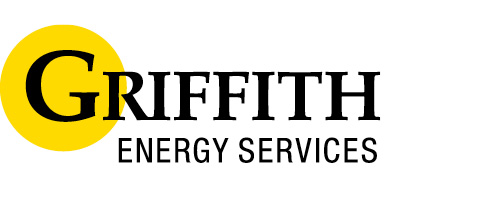Are you buying a new home? Are you preparing to replace your old HVAC system? As many homeowners in Columbia, Maryland, have discovered, there is more than one option to consider in how to heat your home this winter. Perhaps you’ve experienced enough issues with your central heating and air that you never want to deal with it again. What should you turn to next? Geothermal heat pumps? Radiant heating? While every system of heating has its advantages and disadvantages, many homeowners recommend the efficiency and flexibility of ductless heating.
Ductless heating is an excellent alternative to central heating for homeowners looking to cut utility costs and increase efficiency in their home. Here’s how ductless heating can cut costs in your home this winter.
What Is Ductless Heating?
First, the term “ductless heating” deserves some definition. While “ductless” is something of a giveaway, ductless heating is much more than just a central HVAC system without the ducts. A ductless system consists of two portions, much like a regular HVAC system. The first is an outdoor compressor/condenser unit through which refrigerant is pumped. This compressor/condenser is connected to an indoor air handling unit (or multiple units) by a conduit containing refrigerant tubing, a condensate drain, and suction tubing. It then collects the warmer air from outside your home and transports it to the inside where you need it.
Rather than distributing air through a series of ducts into various areas of the home, fans in the indoor units blow air directly into the living area. These indoor units are flexible in their size and location. They can be placed anywhere on the wall or ceiling, allowing for personalization, especially if its installation is integrated into the installation of a new home. Even in an existing home, the system can be integrated and installed into any room, no matter the size or design of the room.
Without ducts, ductless heating already saves you the 30% in energy costs that is normally lost somewhere in the ducts. They also require less power to operate, saving even more money in the long run. But this is just the start. Let’s explore other ways that ductless heating can help you cut costs this winter.
Zoning
With a standard HVAC unit, your entire home is kept at the same temperature. That means that the air in your bedroom will be just as warm as the air in that back room that is rarely entered. You may have previously wondered how you could preserve the precious air that was wasted in that room. With a ductless system, you’ll no longer need to worry.
As mentioned above, ductless heating consists of two units: the outdoor condenser and the indoor air handlers. Since air handlers are placed directly in rooms and are not intended to heat the entire home with one unit, multiple air handlers can be placed among different areas of the home. Whatever area is heated by a ductless system is called a zone. Each zone consists of its own air handler and its own thermostat.
Because zones are separated with individual units and thermostats, each zone can be kept at an independent temperature. Not only does this mean that family members that are more picky with their comfort will finally get their way, but it also means that air won’t be wasted on rooms that are not necessary to always heat or cool. This means that you can more closely control where your air goes. Zoning drastically increases the efficiency of your heating and reduces utility costs since every draft of air is going where it belongs.
Indoor Air Quality
Indoor air quality definitely deserves attention independent of heating costs, but the link between heating costs and indoor air quality is undeniable. Low indoor air quality resulting from too much dust, dirt, and other particles reduces the power of the system and increases system strain. High indoor air quality, on the other hand, reduces utility costs and increases heating and cooling efficiency.
Ductless systems, thanks to the very technology contained within them, have less of an effect on the environment. They also have a less negative impact on your indoor air quality than standard heating. When air is distributed through a duct network, the dust, dirt, germs, and other particles mentioned earlier are spread throughout your home, even if they were only trapped in the room with your sick child before. Ducts also require periodic cleaning because they collect dust and dirt over time.
A multi-stage filtration system is integrated into each indoor unit of a ductless system. These filters keep airborne pathogens from making their way into your living space, and they also prevent pathogens from spreading to other areas of the home. Accordingly, your indoor air quality will continue to result in lower monthly heating costs
Other Advantages of Ductless Heating
In addition to the previous two ways that ductless systems reduce winter heating costs, ductless heating has a host of other advantages that will save you money. A ductless system, for example, can last for up to 20 years, a huge difference when compared to the average 10 to 15 year lifespan of a central heating unit. A longer lifespan means a longer time that you can enjoy the efficiency of ductless heating and the longer before you have to invest in a new unit.
That 20 year lifespan, however, can only be achieved if the ductless system is well cared for and maintained. Fortunately, ductless systems require basic maintenance to run at optimum levels. If filters and coils are kept clean, and the occasional professional maintenance is done on the system, a ductless heater will efficiently keep your home comfortable and healthy for decades. This minor level of required maintenance will save you the money you would spend on the more regular maintenance required on a standard HVAC system. It’s important to note, however, that maintenance, no matter how minimal, should never be ignored. A well-maintained system is an efficient one.
When replacing a dead HVAC system, you may be dreading how long you and your family will have to live without proper comfort in your home. Fortunately, a ductless system can be installed in approximately one single day. Since there is no need to install ducts in the nooks and crannies of your home, contractors installing ductless systems can be in and out before you return home from work.
Since a ductless system is a form of heat pump that moves heat rather than generates it on its own, a ductless system can cool your home down just as well as it warms it up. This means that when you replace your old system, you don’t have install separate air conditioning and furnace units; a ductless system is all in one.
Disadvantages of Ductless Heating
While ductless heating comes with its host of advantages and perks, no heating and cooling system is perfect. Before making a decision as to how you should maintain comfort in your home, it’s best to consider both sides of the equation. Ductless systems, for example, are initially quite expensive to install (generally between $3000 and $5000). While this initial cost will likely be made up by lower operating costs, it is still important to consider how a ductless installation could fit into your budget.
The great flexibility of ductless heating serves as one of its most significant advantages, but when poorly utilized, that flexibility can prove to be a drawback. Incorrect sizing or location of an indoor unit can result in less efficiency. An over-sized indoor unit, for example, may result in short cycling, which wastes energy and doesn’t provide accurate, comfortable temperature control.
Some homeowners enjoy the sleek look of many indoor air handlers, but others find a visible unit obtrusive. A ductless unit will not seem invisible, as central air systems do.
Deciding what heating and cooling method is best for your home can be a stressful and grueling task. But if you’re looking for a system that will cut monthly utility costs while increasing the indoor air quality of your home, then a ductless system is well worth considering. Our team at Griffith Energy Services is happy to give you a free consultation for a ductless system. Call us today at 888-474-3391.
Image provided by Shutterstock




